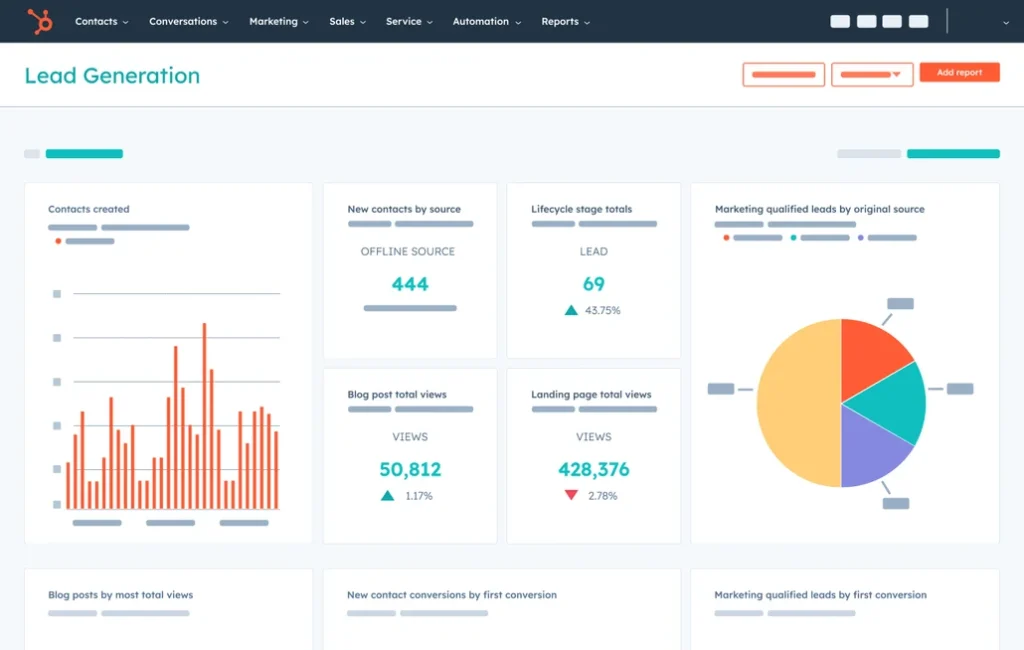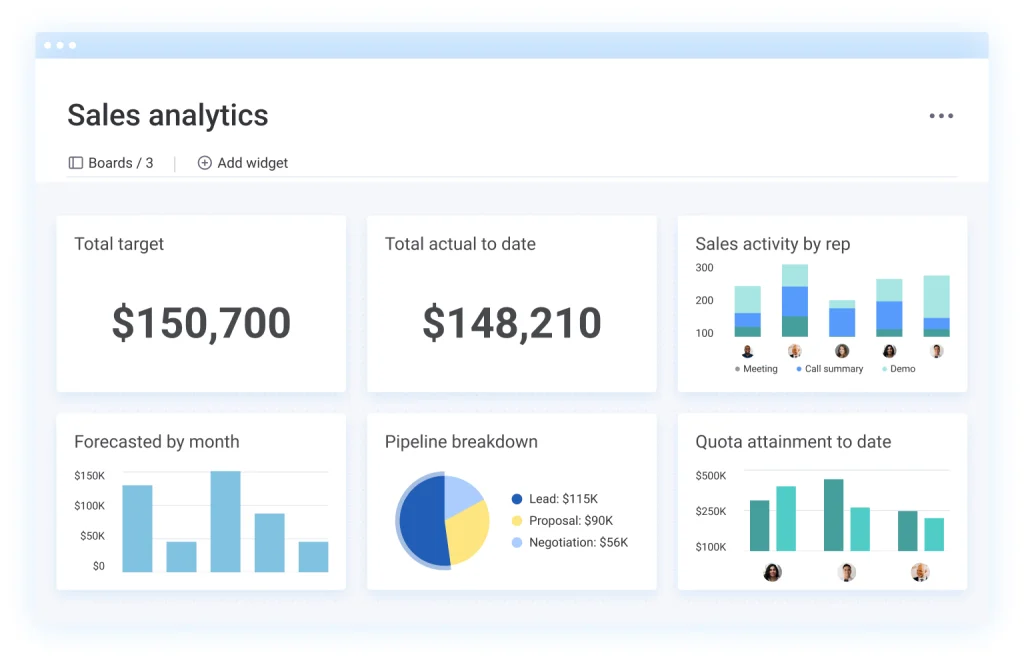Did you know that 75% of businesses using the right marketing tools see a significant improvement in their ROI? (Source: HubSpot) Choosing the right tools can make or break your SaaS business by helping you reach the right audience, optimize campaigns, and drive growth. By helping you reach the right audience, optimize campaigns, and drive growth, these tools act as a foundation for scaling your SaaS business effectively. With countless options on the market, the challenge lies in finding a tool that aligns with your goals and scales with your business.
SaaS companies face unique marketing hurdles. High competition, rapidly changing technologies, and the need to demonstrate value quickly all add layers of complexity. A well-chosen marketing tool can help you tackle these challenges head-on by streamlining processes and delivering actionable insights.
This article aims to simplify the selection process. Whether you’re looking for email automation, CRM, or analytics platforms, we’ll break down what you need to know. By the end, you’ll be equipped with a clear roadmap to finding the perfect marketing tool for your SaaS business.
Remember, the right tool isn’t just a feature set—it’s a strategic partner in achieving your growth objectives. Let’s dive into how to identify your needs, explore options, and make an informed decision.
Understanding Your SaaS Marketing Needs
1. Define Your Business Goals
Success starts with clarity. What are you aiming to achieve? Is your primary goal to generate leads, retain existing customers, or amplify brand awareness? Each objective dictates a different set of requirements in a marketing tool. For example, a SaaS focused on lead generation may prioritize tools with strong lead capture and nurturing capabilities, while a company targeting retention might value customer segmentation and engagement features.
Goals should also be measurable and specific:
- Avoid generic aims like “improve marketing.”
- Opt for concrete goals, such as “increase signups by 20% in the next quarter.”
For example:
- If your goal is to boost customer retention, tools like HubSpot can help with advanced segmentation and personalized workflows to re-engage inactive users.
Aligning tool capabilities with these specific targets ensures you invest in features that drive real impact.
2. Identify Your Target Audience
Knowing your audience is critical for effective marketing. Start by segmenting your users based on demographics, behavior, or engagement levels. Are you targeting small businesses, enterprise clients, or individual consumers? Each segment may respond to different messaging and channels.
Some marketing tools specialize in helping you understand and segment your audience. Look for platforms with built-in analytics or customer persona features that help you tailor campaigns. The better you understand your audience, the more targeted and effective your marketing efforts will be.
3. Assess Your Current Challenges
Every SaaS faces hurdles—what are yours? Are you struggling with low website traffic, poor conversion rates, or high churn? Pinpointing your main pain points is essential for selecting tools that address these issues. For example, if conversion rates are an issue, you might look for tools with A/B testing and robust analytics to optimize landing pages and user flows.
Remember, no single tool solves every problem. Prioritize your most pressing challenges and identify tools with proven solutions for them. This approach ensures that your investment directly contributes to overcoming obstacles and driving growth.
Types of Marketing Tools for SaaS
1. Email Marketing Tools

Hubspot Dashboard (Source)
Email marketing remains a cornerstone of SaaS growth strategies. These tools help you automate outreach, personalize communications, and track engagement. Features to look for include robust templates, segmentation options, and advanced analytics. For instance, platforms like Mailchimp, HubSpot, and ActiveCampaign offer scalable solutions to nurture leads and maintain customer relationships.
2. CRM and Lead Management Tools

Monday CRM Dashboard (Source)
Managing customer relationships and leads effectively is vital for SaaS businesses. A good CRM tool helps you organize customer data, track interactions, and streamline sales pipelines. Look for tools like Salesforce, Zoho CRM, and Pipedrive, which integrate seamlessly with other marketing platforms and provide detailed analytics on customer behavior.
3. Analytics and Reporting Tools

Data-driven decisions are essential for SaaS marketing success. Analytics tools help you measure key metrics such as customer acquisition cost (CAC), lifetime value (LTV), and conversion rates. Google Analytics, Mixpanel, and Tableau are excellent options for tracking user behavior and generating actionable insights.
4. Content Marketing Tools
Content drives inbound marketing efforts by attracting and engaging potential customers. Tools like BuzzSumo, WordPress, and SEMrush support content creation, optimization, and distribution. They also offer insights into trending topics and competitor strategies, helping you stay ahead in the market.
5. Social Media Marketing Tools
Social media is a powerful channel for SaaS companies to build brand awareness and connect with users. Tools like Hootsuite, Buffer, and Sprout Social simplify scheduling, monitoring, and engagement across platforms.
- Hootsuite: Known for robust analytics and managing multiple accounts.
- Buffer: Excels at content scheduling with an easy-to-use interface.
- Sprout Social: Offers advanced social listening features to better understand audience sentiment.
Analytics features can also help you measure the success of your campaigns.
6. All-in-One Platforms
For those seeking comprehensive solutions, all-in-one marketing platforms may be the answer. These tools combine multiple functionalities, such as email automation, CRM, and analytics, into a single interface. HubSpot, Marketo, and SharpSpring are popular choices, offering scalability and integration with various business systems. However, it’s essential to evaluate whether their broader capabilities match your specific needs.
Steps to Evaluate and Implement a Marketing Tool
1. Research and Shortlist Tools
Start by exploring the available options in the market. Use reviews, expert recommendations, and case studies to identify tools that align with your needs. Create a shortlist of tools that meet your core requirements, budget, and scalability goals. Remember to consider industry-specific tools that may have tailored features for SaaS businesses.
2. Request Demos or Trials
Most marketing tools offer free trials or live demos. Use these opportunities to test the platform’s features, user interface, and overall fit for your business. Involve your team in the evaluation process to gather diverse feedback and assess usability from multiple perspectives.
3. Assess Total Cost of Ownership
When evaluating a marketing tool, you need to understand its Total Cost of Ownership (TCO), which includes all expenses—both direct and hidden—over time. Here’s a breakdown of key cost components:
| Cost Component | Description |
|---|---|
| Licensing Fees | Monthly or annual subscription costs for using the tool. |
| Implementation Costs | Fees for setting up the tool, including integrations with existing systems. |
| Training Costs | Costs for onboarding and educating your team to use the tool effectively. |
| Maintenance & Support | Ongoing costs for updates, troubleshooting, and customer support services. |
| Potential Upgrades | Additional fees for scaling or accessing premium features as your business grows. |
| Hidden Costs | Unforeseen expenses such as API usage limits, add-ons, or charges for exceeding usage caps. |
Steps to Evaluate TCO Effectively:
- Compare Licensing Plans: Review all available pricing tiers to identify the best fit for your business.
- Consider Scalability: Estimate future costs as your team grows or your needs evolve.
- Identify Hidden Fees: Look for potential add-on costs, usage limits, or mandatory upgrades.
- Estimate ROI: Calculate the tool’s impact on revenue growth, efficiency improvements, and time savings.
Pro Tip: Use a TCO calculator or create a simple spreadsheet to compare multiple tools side by side. Factor in both short-term and long-term expenses.
4. Check Integration and Compatibility
Test the tool’s compatibility with your existing software stack. Integration is crucial for creating seamless workflows and minimizing data silos. Here are specific checks to consider:
- CRM Compatibility: Ensure the tool integrates with your existing CRM for seamless customer data flow.
- Email Automation: Verify that email platforms can sync data without delays or loss.
- Analytics Integration: Check if the tool can connect with analytics platforms like Google Analytics or Mixpanel.
- API Limitations: Confirm the tool supports robust APIs to enable custom integrations.
- Data Syncing: Look for potential issues like delays, errors, or mismatched data across platforms.
- Workflow Continuity: Test how the tool fits into your current processes and minimizes manual interventions.
5. Customize and Configure
Once you’ve chosen a tool, take the time to customize it to fit your business needs. Configure workflows, templates, and user roles to maximize efficiency. Many tools offer onboarding support to help with this process—don’t hesitate to take advantage of these resources.
6. Train Your Team
Invest in training sessions for your team to ensure they understand how to use the tool effectively. Clear documentation, video tutorials, and direct support from the vendor can expedite the learning curve and improve adoption rates.
7. Monitor Performance and Optimize
After implementation, continuously monitor the tool’s performance. Track key metrics and gather feedback from your team to identify areas for improvement. Regularly optimize workflows and configurations to ensure you are getting the maximum value from the tool.
Conclusion
Selecting the right marketing tool is more than ticking boxes on a feature list. It’s about choosing a solution that aligns with your goals, solves your unique challenges, and grows with your SaaS business. By following the steps outlined in this guide—understanding your needs, exploring the types of tools available, and carefully evaluating each option—you can make an informed decision. Prioritizing tools that align with your business goals and integrate seamlessly into your workflow is the key to maximizing ROI and achieving sustainable growth.
The right tool empowers your team, streamlines your processes, and helps you achieve measurable growth. Take a thoughtful approach, engage your team in the process, and focus on tools that provide the ideal mix of features, usability, and ROI. In the end, a well-chosen marketing tool becomes a strategic partner in your journey to success.


